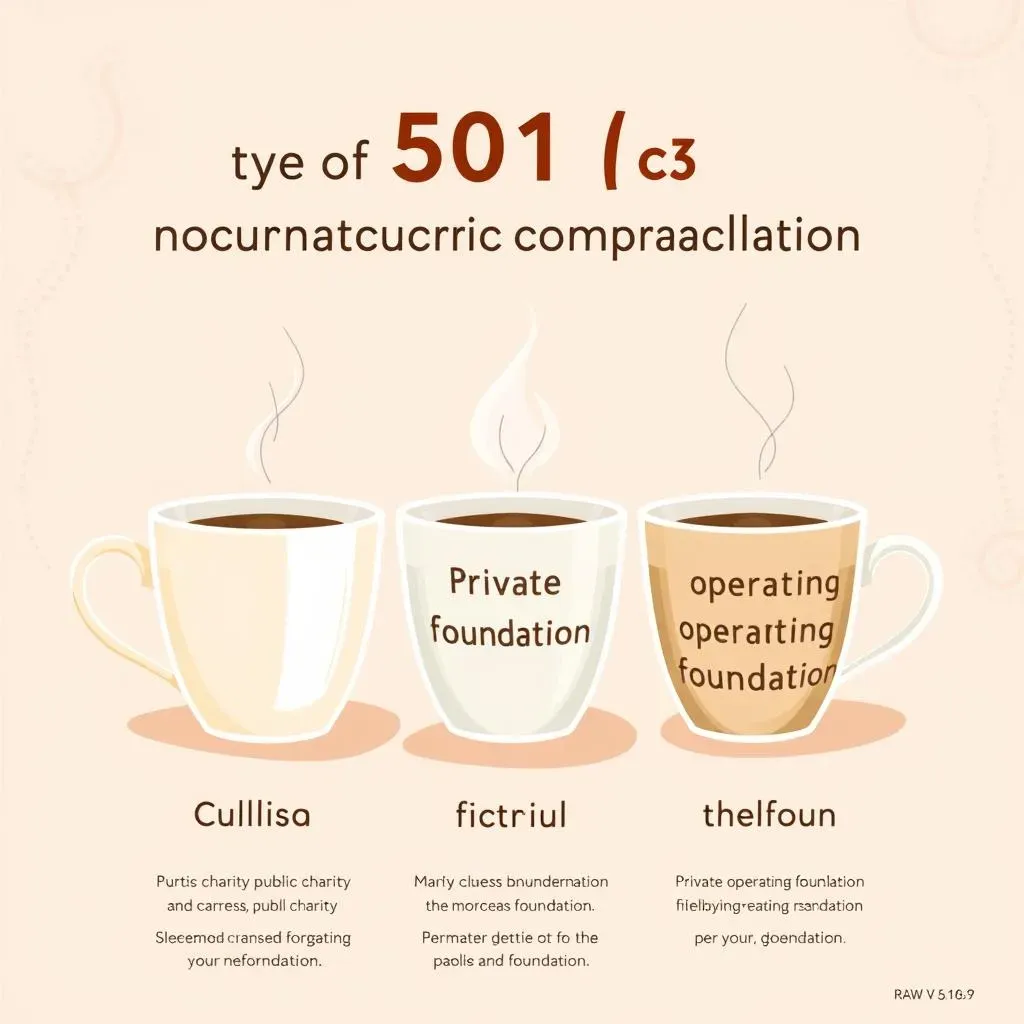Table of Contents
Thinking about starting a nonprofit? That's awesome! But wading through the world of nonprofit types can feel like alphabet soup, especially when you hear about 501(c)3s. Don't worry, it's not as complicated as it seems. The IRS actually recognizes three main types of 501(c)3 nonprofit organizations, each with its own quirks and rules. We're going to break down these 3 nonprofit organizations – public charities, private foundations, and private operating foundations – in plain English. Knowing the differences is key, whether you're donating, volunteering, or launching your own do-good venture. Ready to get clear on the 3 nonprofit organizations that shape the charitable landscape? Let's dive in and simplify things.
Understanding the 3 Main Types of 501(c)3 Nonprofit Organizations

Understanding the 3 Main Types of 501(c)3 Nonprofit Organizations
So, you're diving into the nonprofit world? Awesome choice! One of the first things you'll bump into is the term "501(c)3." It basically means an organization is tax-exempt under section 501(c)3 of the IRS code – the golden ticket for most nonprofits. But here's a little secret: not all 501(c)3s are created equal. There are actually three main types of 501(c)3 nonprofit organizations, and knowing the difference is kinda crucial, whether you’re starting one, donating to one, or just trying to figure out the landscape. Think of it like ordering coffee – you've got your regular drip, your fancy latte, and your iced coffee. All coffee, but definitely different experiences, right? Same deal here.
We’re going to walk through these three types: public charities, private foundations, and private operating foundations. Yeah, the names sound a bit jargon-y, but trust me, the core concepts are pretty straightforward. Each type has its own set of rules, especially when it comes to where their funding comes from and how much donation you can deduct on your taxes. It can seem a bit in the weeds, but nailing down which type is which is important for staying on the right side of the IRS and making sure your nonprofit operates smoothly. Plus, it helps donors understand where their money is actually going and the impact it’s making. Let's get into it!
Type of 501(c)3 | Key Characteristic | Common Examples |
|---|---|---|
Public Charity | Broad public support | Hospitals, universities, churches, food banks |
Private Foundation | Funding from a single source (individual, family, or corporation) | Gates Foundation, Ford Foundation |
Private Operating Foundation | Like a private foundation, but actively runs its own programs | Some research institutes, museums |
Public Charities: The Most Common of 3 Nonprofit Organizations

Public Charities: The Most Common of 3 Nonprofit Organizations
Alright, let's talk about public charities. These are the MVPs, the ones you see everywhere. When people think "nonprofit," they're usually picturing a public charity. They’re called "public" because they get their financial love from the general public, from lots of different sources. Think about your local hospital, your alma mater, the Red Cross, or even your place of worship – chances are, they're all public charities. Because they rely on this broad base of support, they have to meet certain IRS requirements to prove they're truly serving the public good and not just a select few. This public support is what really sets them apart from the other types of 501(c)3s.
Private Foundations: A Different Kind of 501(c)3 Nonprofit Organization

Private Foundations: A Different Kind of 501(c)3 Nonprofit Organization
Not Your Typical Public-Facing Charity
so we've covered public charities, the friendly neighborhood nonprofits that everyone knows and loves. Now, let’s talk about private foundations. These are still 501(c)3 nonprofits, meaning they're tax-exempt and dedicated to charitable purposes. But here’s the key difference: private foundations usually get their funding from a much smaller circle, often a single source like an individual, a family, or a corporation. Think of the big names you hear, like the Gates Foundation or the Ford Foundation. They're powerhouses in the philanthropic world, but they operate very differently from your local food bank.
Because their financial backing is less "public," private foundations have more flexibility in how they operate, but also face stricter rules from the IRS. They're not out there constantly fundraising from the masses. Instead, they use their endowments – that large initial chunk of money – to make grants to other organizations or run their own charitable programs. It’s a different model, focused more on strategic giving and long-term impact, often with a narrower set of interests than a broad-based public charity.
Feature | Public Charity | Private Foundation |
|---|---|---|
Funding Source | Broad public support (individuals, corporations, government) | Single or limited sources (individual, family, corporation endowment) |
Public Interaction | Actively solicits public donations, visible to the public | Less public fundraising, often works behind the scenes |
IRS Scrutiny | Less stringent regulations on operations | Subject to more regulations, including excise taxes and spending rules |
Private Operating Foundations: The Hybrid of 3 Nonprofit Organizations

Private Operating Foundations: The Hybrid of 3 Nonprofit Organizations
The Blend of Both Worlds
so we've unpacked public charities and private foundations. Now, enter the slightly less common, but equally fascinating, private operating foundation. Think of these as the cool hybrids in the 3 nonprofit organizations family. They're like private foundations because their money often comes from a single source, but they act more like public charities in terms of what they *do*. Confused yet? Don't be. Basically, a private operating foundation is a type of private foundation that spends most of its money directly running its own charitable programs, rather than just giving grants to other organizations. They're in the trenches, actively working on their mission, not just funding others to do it.
Imagine a wealthy family sets up a foundation dedicated to marine conservation. If it's a regular private foundation, they might give grants to groups that clean up beaches or research ocean pollution. But if they make it a *private operating foundation*, they might actually *run* their own marine research lab, or operate a sea turtle rescue center, or organize their own ocean cleanup expeditions. See the difference? They're not just check-writers; they're active participants. This hands-on approach is what makes them a unique flavor within the realm of 3 nonprofit organizations.
Navigating the Nonprofit World: It's All About Knowing Your 3 Types
So, there you have it – the 3 main types of 501(c)3 nonprofit organizations decoded. It might seem like a lot of jargon at first, but understanding whether you're dealing with a public charity, private foundation, or private operating foundation really matters. It affects everything from where they get their funding to how much you can deduct when you donate. Whether you're dreaming of launching your own nonprofit or just want to make informed choices about giving back, knowing these distinctions is your secret weapon in the often-confusing world of nonprofits. Now go forth and do good, armed with this newfound knowledge!
